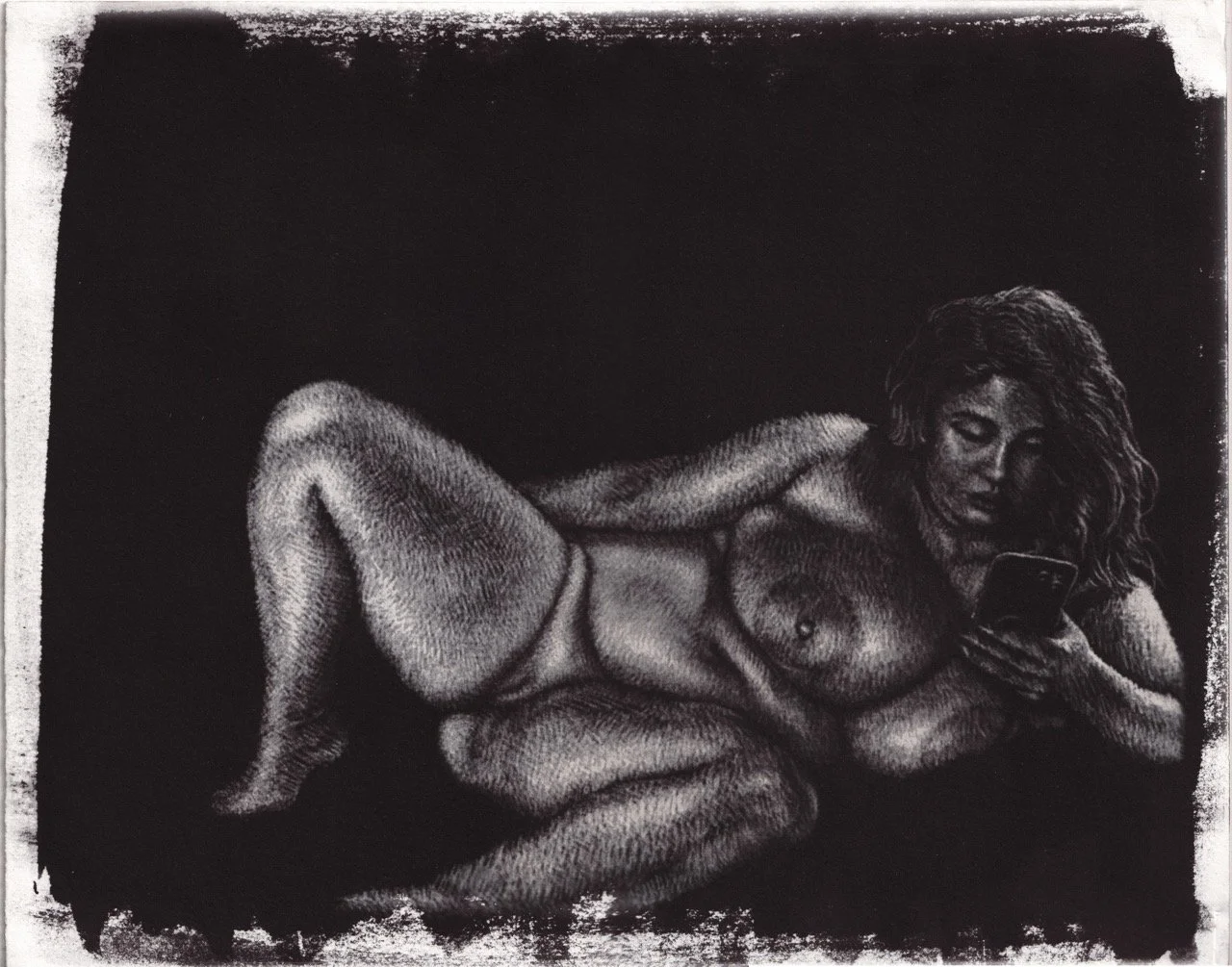In Isolation: Salt
Soon after COVID-19 lockdown in early 2020, figure models began offering remote posing sessions for artists around the world. In a time of social distancing, I found diverse collectives of models and artists determined to continue the social practice of drawing from life. I drew the models posing live on my laptop screen and digitally transferred them to transparency film to produce salt print photographs.
In Isolation: Salt installed as part of the School of the Art Institute Faculty Sabbatical Triennial, 2022.
In the late 1830s, William Henry Fox Talbot discovered that silver nitrate becomes light-sensitive when applied to paper coated with salt water. This basic formula was the birth of photography. The medium became more sophisticated over the decades, building an industry of ready-made film, negatives, and complex chemistry, but Talbot’s method only requires a few basic ingredients to make a permanent image. During quarantine, I acquired silver nitrate from a chemical supply company and went to work with items from the pantry. The method is laborious, but straightforward. Coat a piece of paper with salt water and let it dry. Brush on a silver nitrate solution and let dry. This paper is now sensitive to UV light. Placing the transparency on the paper and exposing it to sunlight for 30-60 minutes will make a permanent photograph.
These prints are somewhere between drawing and photograph, made thanks to the digital intermediary of live, remote video conferencing. The paper bears marks of the obsolete, handmade process, such as brush strokes of silver nitrate application at the paper’s edges. And yet the figures, however lifelike, are drawings made only with white pencil on dark surfaces. The scenes are of models between poses, and composed exactly as they were on screen, revealing that peculiar contemporary experience of live, remote interaction.
For other works in the series, see In Isolation: Ink, In Isolation: Pencil, and In Isolation: Water.









